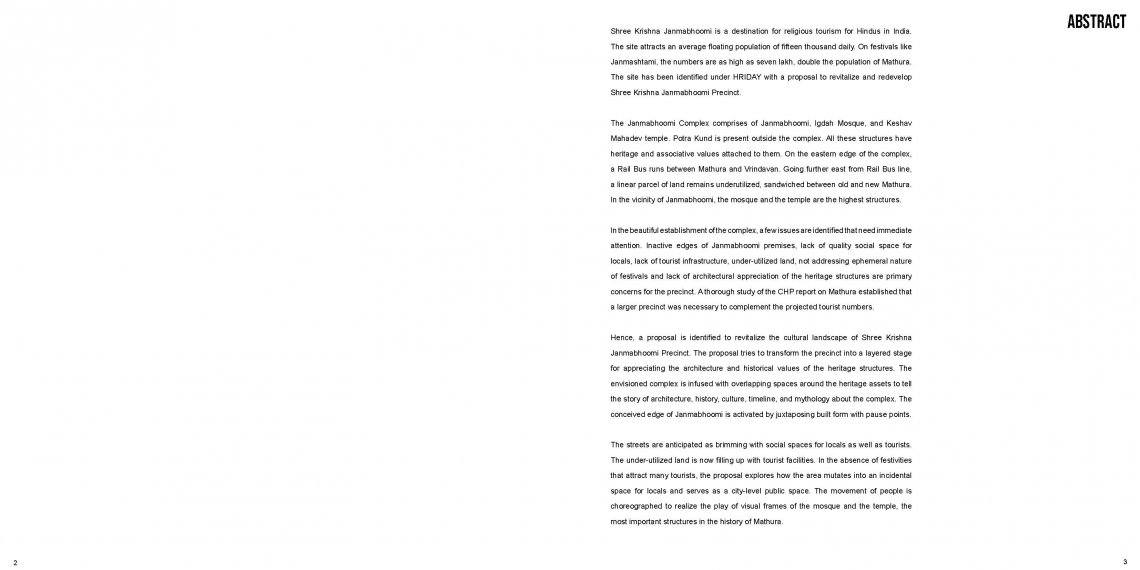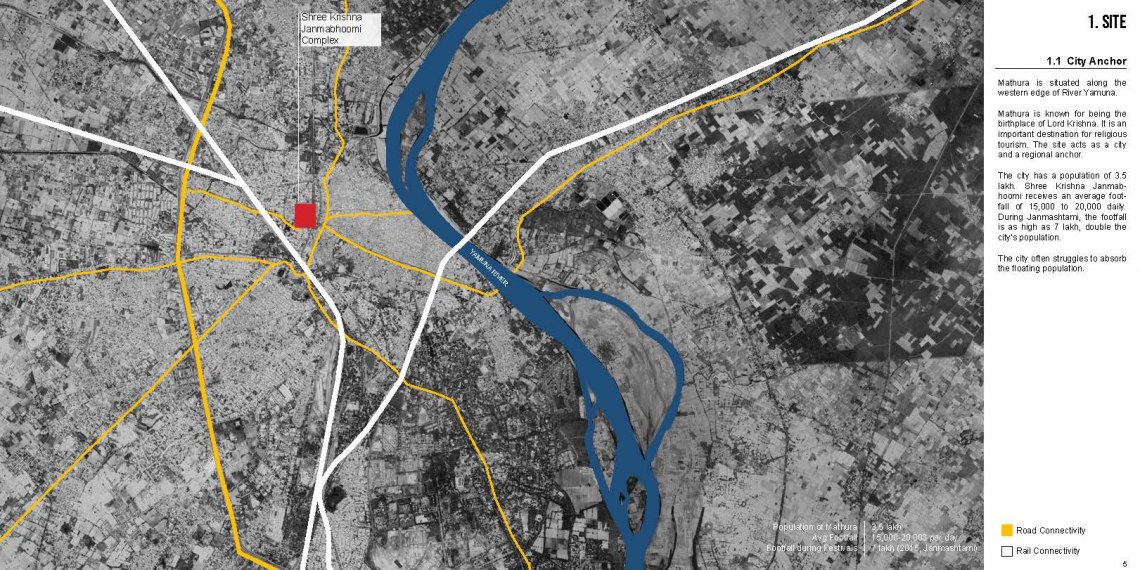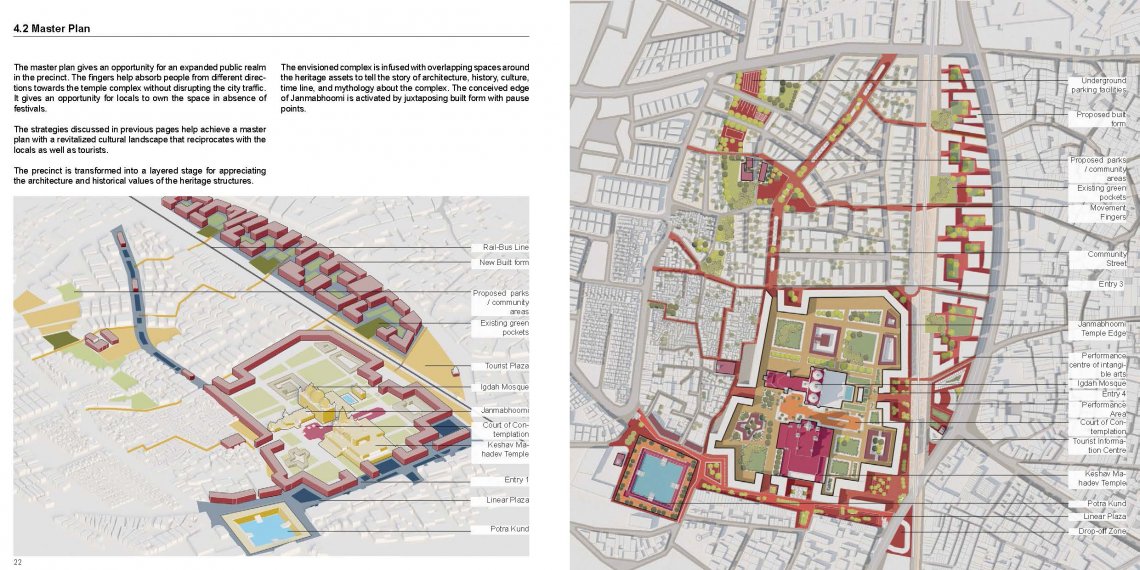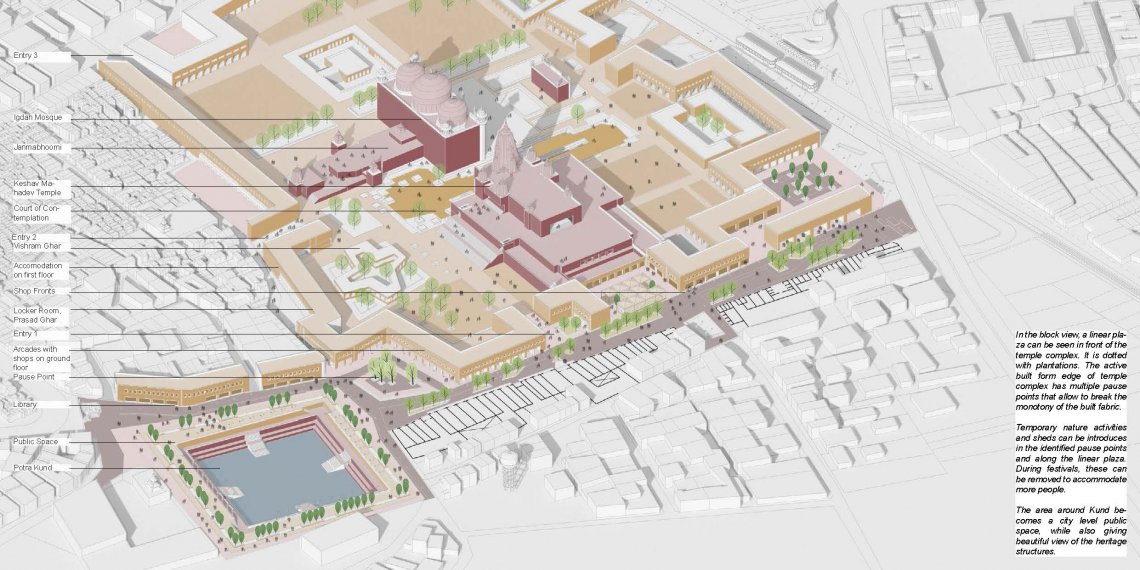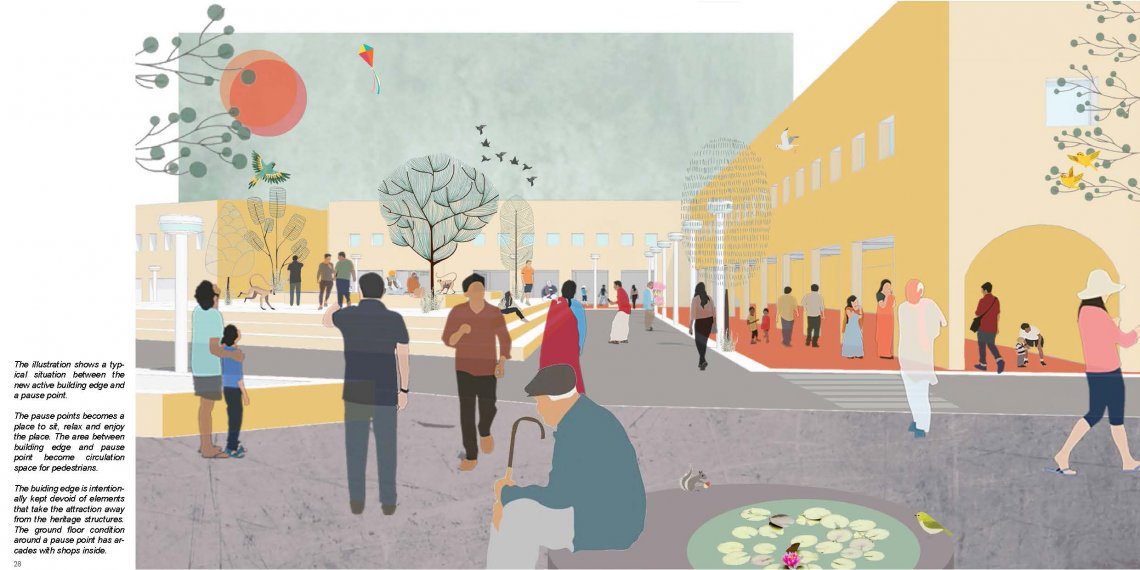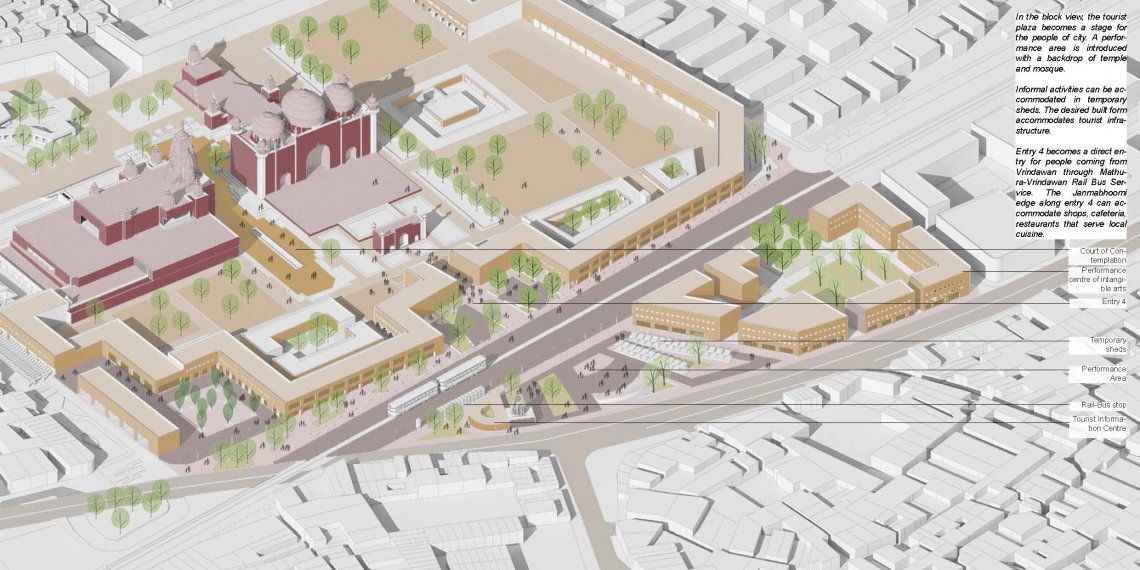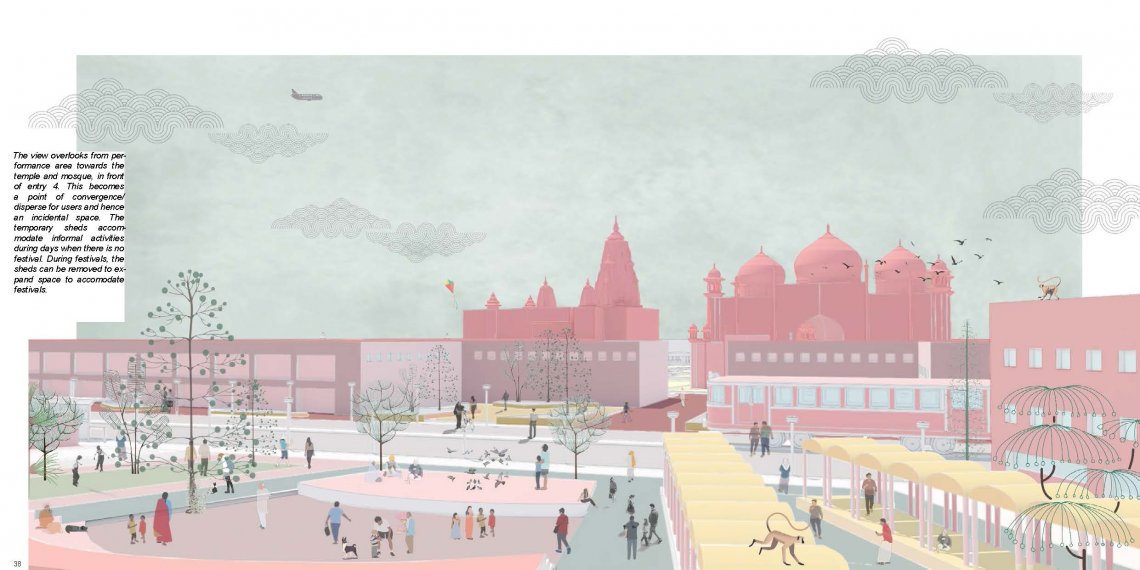Your browser is out-of-date!
For a richer surfing experience on our website, please update your browser. Update my browser now!
For a richer surfing experience on our website, please update your browser. Update my browser now!
Shree Krishna Janmabhoomi is a destination for religious tourism for Hindus in India. The site attracts an average floating population of fifteen thousand daily. On festivals like Janmashtami, the numbers are as high as seven lakh, double the population of Mathura. The site has been identified under HRIDAY with a proposal to revitalize and redevelop Shree Krishna Janmabhoomi Precinct. The Janmabhoomi Complex comprises of Janmabhoomi, Igdah Mosque, and Keshav Mahadev temple. Potra Kund is present outside the complex. All these structures have heritage and associative values attached to them. On the eastern edge of the complex, a Rail Bus runs between Mathura and Vrindavan. Going further east from Rail Bus line, a linear parcel of land remains underutilized, sandwiched between old and new Mathura. In the vicinity of Janmabhoomi, the mosque and the temple are the highest structures. In the beautiful establishment of the complex, a few issues are identified that need immediate attention. Inactive edges of Janmabhoomi premises, lack of quality social space for locals, lack of tourist infrastructure, under-utilized land, not addressing ephemeral nature of festivals and lack of architectural appreciation of the heritage structures are primary concerns for the precinct. A thorough study of the CHP report on Mathura established that a larger precinct was necessary to complement the projected tourist numbers. Hence, a proposal is identified to revitalize the cultural landscape of Shree Krishna Janmabhoomi Precinct. The proposal tries to transform the precinct into a layered stage for appreciating the architecture and historical values of the heritage structures. The envisioned complex is infused with overlapping spaces around the heritage assets to tell the story of architecture, history, culture, timeline, and mythology about the complex. The conceived edge of Janmabhoomi is activated by juxtaposing built form with pause points. The streets are anticipated as brimming with social spaces for locals as well as tourists. The under-utilized land is now filling up with tourist facilities. In the absence of festivities that attract many tourists, the proposal explores how the area mutates into an incidental space for locals and serves as a city-level public space. The movement of people is choreographed to realize the play of visual frames of the mosque and the temple, the most important structures in the history of Mathura.

